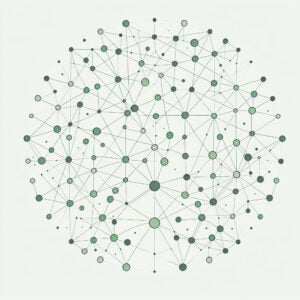“Data-Driven Thinking” is written by members of the media community and contains fresh ideas on the digital revolution in media.
Today’s column is written by Seraj Bharwani, chief strategy officer at AcuityAds.
The gradual and inevitable loss of legacy tracking infrastructure, including mobile ad-IDs, third-party cookies and device-level IP, will be of major consequence for the digital advertising ecosystem.
And given the anticipated loss in signal quality, the key question for most advertisers is: Can they retain control over audience reach, frequency and measurement with new, privacy-protected approaches to advertising?
Scale and interoperability are critical to identity resolution
The emergence of large-scale data and identity resolution platforms with audience graphs across devices and households is a major step forward to helping reclaim control over reach and frequency. But there’s no single solution to the problem.
In fact, it’s a combination of deterministic (login/registration, email, phone or comparable identifier) and probabilistic methods that will make audience reach and frequency planning a reality.
Several companies have advanced the state of identity resolution by investing heavily in internal platforms and have enhanced the offerings through multiple acquisitions.
LiveRamp, for example, introduced LiveRamp RampID and Authenticated Traffic Solution (ATS) to offer an interoperable and neutral infrastructure for addressability covering 250 million+ consumers. The company also offers a third-party clean room solution for privacy-protected data matching.
Oracle, meanwhile, acquired and merged data technologies from BlueKai, Moat and AddThis to create an audience trading platform with access to over 300 million users.
And TransUnion aggregated its vast store of data across credit ratings, transactions and driver history with identity anchors through the acquisition of Tru Optik and Neustar. This made the company a major data and identity player with over 80 million households across CTV and streaming audio.
Still, though these solutions have jumpstarted the bridge-building efforts, the industry needs interoperability to achieve scale and efficiency in a privacy-protected future. And the Open Source UID2 initiative from The Trade Desk could play an integral role in this future.
UID2 is not only interoperable with RampID, ID5 and selected agency holding company solutions; it is also penetrating the proprietary publisher space through UID2 integration across the Disney media properties. The hope is this move will encourage other proprietary publishers to follow suit.
The revival of vintage measurement
As identity providers evolve their approaches for better control over reach and frequency, the path to privacy-protected measurement is media-mix modeling (MMM), a familiar territory for linear TV advertisers.
Used appropriately, econometrics models can successfully account for a wide range of channels and publishers beyond linear TV (including the walled-garden media) to establish incremental contribution and cross-channel media attribution. By contrast, multi-touch attribution (MTA) appears less effective given the signal loss from deprecation of legacy pixels that enable behavior-based tracking at an individual level.
A switch to MMM, however, comes with a major downside. There are extensive data aggregation, analysis, modeling and reporting efforts required, which can take months. Advertisers, meanwhile, expect near-real-time feedback from behavior-based tracking methods.
A variety of marketing measurement and attribution providers, including Measured, Improvado, SegmentStream and Amplitude, have entered the market to offer refined approaches to MMM with incrementality testing and conversion modeling techniques. But it is unclear to what extent the new measurement solutions address the need for effectiveness and rapid response to enable in-market optimization.
For now, existing data can connect the dots
Regardless of when Google disables third-party cookies in Chrome, advertisers can now access a variety of privacy-protected solutions to test for impact on reach and frequency. But the uncomfortable truth is that media will only continue to fragment, creating new challenges for advertisers.
Fortunately, in the absence of universally interoperable consumer identity, advertisers can make progress by gradually building their own pool of proprietary customer data and engaging with publishers like Disney, The New York Times, the Financial Times and Forbes that have developed their own proprietary audience graphs.
At the same time, the industry must continue to work toward greater interoperability to offer a scalable, efficient and transparent transition to a privacy-centric future for the advertisers.
Follow AcuityAds (@AcquityAds) and AdExchanger (@adexchanger) on Twitter.
Correction: A previous version of this column referred to LiveRamp’s ID solution, RampID, by its old name, IdentityLink.
For more articles featuring Seraj Bharwani, click here.















